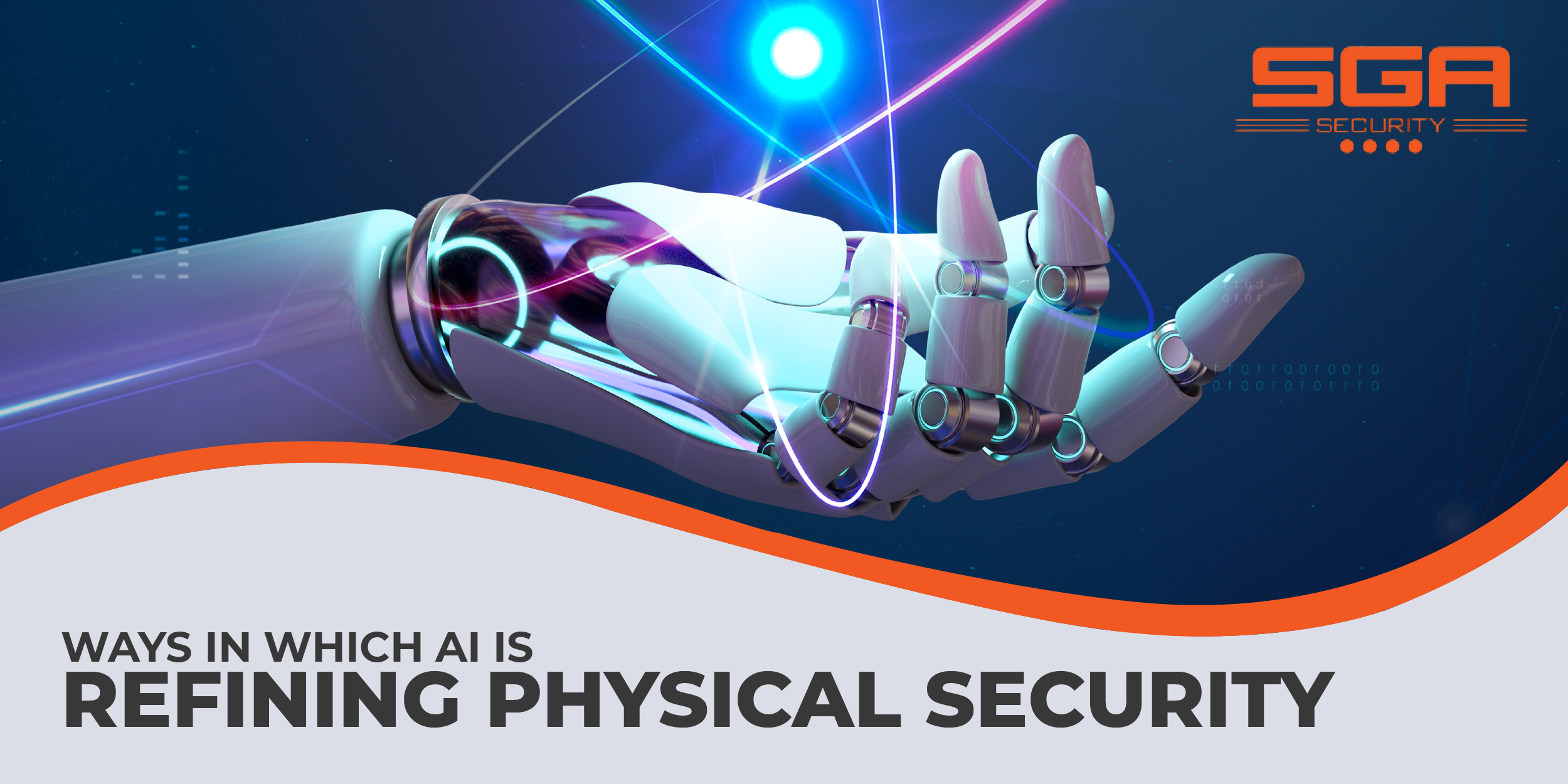- Home
- About Us
- Services
- Our Clients
- CSR
- SGA Security Kenya Visit to Wings of Hope Rescue Home
- SGA SECURITY CHAMPIONS SUSTAINABILITY THROUGH RECYCLING OF OLD GUARDS’ UNIFORMS INTO SCHOOL BAGS
- SGA SECURITY UGANDA ADVOCATES FIGHTING AGAINST BREAST CANCER
- SGA SECURITY KENYA SPONSORS THE 2023 AFRICA CONCOURS D’ELEGANCE
- SGA Security Sponsors Car No.7 Ahead of The Rhino Charge Competition
- SGA SECURITY PARTNERS WITH AFRICA COLLECT TEXTILES TO RE-USE GUARDS’ UNIFORMS INTO SCHOOL BAGS
- WAFANYAKAZI WA KIKE WA KAMPUNI YA SGA WATOA MSAADA WA VIFAA HOSPITALI YA OCEAN ROAD
- Security firm sponsors The Great African Cycling safari
- Contacts
- Careers
- News


Artificial intelligence (AI) is quickly transforming physical security, moving beyond traditional security methods to create more proactive and efficient systems. AI analyses large amounts of data from various sources and uses the data to predict threats and automate response, significantly increasing efficiency and improving physical security.
Below are ways in which AI is refining physical security:
Enhanced Video Surveillance and Monitoring
The process of security personnel manually monitoring CCTV footage is prone to distraction and missed events. AI video analytics continuously analyse video streams in real-time, identifying unusual activities and providing actionable insights.
Instead of a simple motion alarm, an AI-embedded system can differentiate between a tree branch swaying in the wind and an actual human intrusion. If an unauthorized person enters a restricted area, the AI system immediately flags it, sends an alert to security personnel, and can even highlight the individual in the footage, enabling faster response.
Intelligent Access Control Systems
Physical security often relies on keycards, PINs, or basic biometric systems that can be compromised or lack adaptability. AI enhances access control by integrating advanced biometric authentication, intelligent access policies, and adaptive security responses.
AI systems can detect when multiple people attempt to pass through an access point with a single credential, significantly reducing unauthorized entry that is often missed by human guards.
Prediction of Threats and Incident Prevention
Physical security is traditionally focused on responding after an incident occurs. AI-embedded CCTV cameras are shifting this model from reactive to proactive.
Instead of simply responding to incidents, these systems analyse large volumes of historical and real-time data to predict potential threats and prevent incidents before they happen.
For instance, in retail settings, AI can analyse customer behaviour to identify patterns associated with shoplifting—such as loitering or unusual bag movements. This allows the system to send a discreet alert to store security, enabling them to intervene before a theft occurs.
Automated Patrols
Human security guards conduct physical patrols, which can be time-consuming, expensive, and limited in coverage for large areas.
AI-powered cameras with advanced sensors can be strategically placed to enhance surveillance. These systems detect suspicious activity, recognize unauthorized personnel, and immediately alert human security teams.
For example, in warehouses and industrial sites, thermal cameras can perform temperature scans in high-risk zones, adding another critical layer of protection that would be difficult for a guard to provide alone.
Conclusion
AI is not replacing physical security but rather improving its capabilities. By automating tasks, providing advanced analytical insights, and enabling proactive measures, AI allows physical operators to focus on strategic decision-making, complex threat assessments, and direct intervention—leading to significantly enhanced security outcomes.
To access SGA Security’s top-notch security services, visit:
https://www.sgasecurity.com/our-services/special-services
